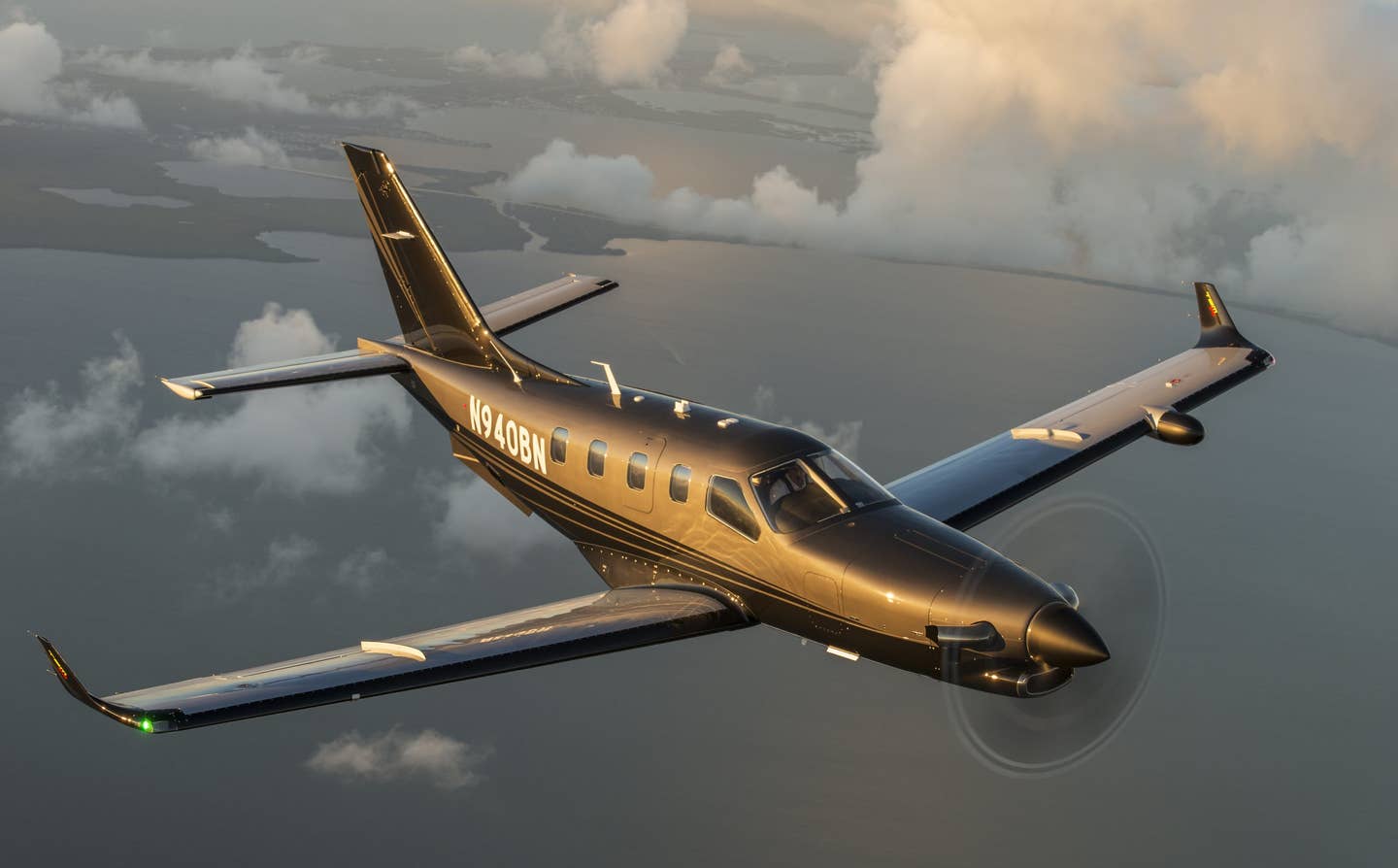
Many turboprop owners use their aircraft for business—such as this TBM 940. Daher
Business aviation encompasses a broad range of operations—and has since the first Learjet took flight, and the Cessna 195 Businessliner was initially marketed to business owners flying themselves in search of opportunity.
The National Business Aviation Association put the focus on owner-pilots this week at its Business Aviation Conference and Exhibition with a series of forums housed in a dedicated pavilion at the aircraft display at the Henderson Executive Airport (KHND).
The pavilion gave space to booths featuring various type-specific owner groups, including the:
- Pilatus Owners and Pilots Association
- Cirrus Owners and Pilots Association
- Malibu M-Class Owners and Pilots Association
- TBM Owners and Pilots Association
Sessions focused on the range of topics, from broad forums to specific case studies—such as the report on a study conducted by the Citation Jet Pilots group on “Go-Around Decision Making.”
Daher hosted a session, “Combining Business and Flying: The Owner/Single-Pilot Life,” on Tuesday afternoon moderated by InfoWest Group president and CEO Jeff Lenorowitz, and featuring three TBM owners with a cross-section of piloting experience:
- Kelly K. Burris, an intellectual property attorney who is the new owner of a TBM 940
- Robert J. Bordes Jr., president of the Corporate Aircraft Association, a high-time pilot who flies a TBM 850
- Gordon Kramon, a TBM pilot and director of air operations at the University of North Carolina, which operates three TBM aircraft—a TBM 940, TBM 850 and TBM 700C2.
One key concern: Flying single-pilot with family, colleagues, and friends on board raises the question of what those passengers would do in the event the pilot became unable to continue. The most recent answer—incorporated into the Daher TBM 940 Home Safe, the Piper M600/SLS Halo, and the Cirrus Vision Jet G2 with Safe Return—is Garmin’s Autoland function. It allows a passenger to trigger a series of actions resulting in an emergency landing at a suitable airport.
Kelly Burris, who flies her TBM 940 with colleagues as well as family, has found this to be a game-changer—for both her co-workers and their families.
“These are all engineers I work with, right—they’re electrical engineers, software engineers, aeronautical, mechanical, you name it, they’re all engineers, and most of their spouses are as well. So I show them the video, show them the technology, and they went home and showed their spouses, and they literally came back the next day and were like, OK, you can go.’”
“So if something happens, if she passes out” the colleague has recourse. “The families are all comfortable with it because of Autoland.”
“We have a C2 850 and a 940 with the Autoland, and we brief on the Autoland, and I’ve had some of the coaches say, ‘OK, so what if we’re in the other airplane, what do we do?’” Kramon said. “And I don’t really have an answer because the technology is so advanced.”
The breakthrough in improving single-pilot operation’s appeal to passengers is similar to that experienced after Cirrus introduced its airframe parachute, CAPS.
Other topics covered in the session included insurance, proficiency, and recurrent training—certainly relevant to all aviators, but with nuances for those flying as the sole pilot on board.

Sign-up for newsletters & special offers!
Get the latest FLYING stories & special offers delivered directly to your inbox






